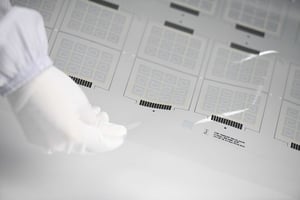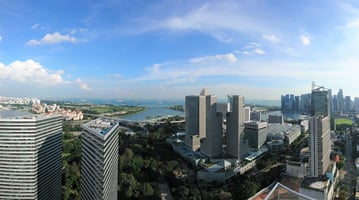Central Midori’s core expertise is in graphic and functional printing on thin and flexible...
Most Commonly Used Substrates
In this article, we will look into the four types of materials that represent the most commonly used substrates (e.g. PET, PC, TPU and PI) at our Partner Central Midori.
Polyester
Polyester (Polyethylene Terephthalate, PET) has been our substrate of choice for its properties and low cost. The Tg is around 80⁰C (material starts to soften at this temperature) and shrinkage can be significant (0.5 to 1%). Heat stabilization results in better dimensional stability (0.1% shrinkage) but the impact on pricing is non-negligible. Polyester has a low moisture absorption, it can withstand temperature up to 130-140⁰C. The surface can be treated to improve ink adhesion. It is available in different colors and various finishes.
Polycarbonate
Polycarbonate (PC) has been competing against PET in membrane switch applications for many years. PC has a better abrasion resistance without the assistance of a hard coat but it has a limited chemical resistance and is not recommended for harsh environment use. Visual appearance is polycarbonate notable advantage with superior transparency and a wide range of thicknesses, textures and finishes.
Thermoplastic Polyurethane
Thermoplastic Polyurethane (TPU) offers a unique combination of properties that make it an excellent material for the flexible electronics industry. TPU has an excellent tear and abrasion resistance and its high flexibility even at very low temperatures makes it highly suitable for stretchable electronics with a typical elongation in the vicinity of 700%. TPU is referred to as the bridge between rubbers and plastics, it appears rubber-like and is smooth to the touch. The film is also known for its breathability which means that the producer can adjust the amount of moisture transfer through the film through selection of polymers and additives. The film is typically provided as a 3 layer material with a sandwich of a temperature resistant carrier and a melt adhesive layer.
Polyimide
Polyimide (PI) is a polymer of imide monomers that offers a unique combination of electrical, thermal, chemical and mechanical properties. Polyimide can accommodate temperatures between -269⁰C and 400⁰C, it has the highest UL-94 flammability rating of V-0 and it does not burn and has no known melting point. Its outstanding dielectric strength makes it the perfect solution for electrical insulation uses. The film has also an excellent dimensional stability with shrinkage in machine and transversal directions (MD and TD) typically around 0.25%.
In our industry, engineers often refer to polyimide as a sponge, despite its many advantages, polyimide film has a tendency to absorb moisture and that can pose serious reliability problems. At CMI we found out that baking the film in between manufacturing operations and storing it in a dry environment have been the best remedies to control its water content.
Conclusion
While these represent the most commonly used substrates at CMI, many other materials have been tested in our Development Center over the years such as Polyethylene Naphthalate (PEN), Polyvinyl Chloride (PVC), Nomex, silicon and even paper.
With the continuing growth of Printed Electronics applications in markets such as automotive, healthcare, consumer electronics and industrial, CMI is always working together with material suppliers and our customers to keep exploring new substrate opportunities.
-1.jpg?width=146&height=50&name=Kusu%20(1)-1.jpg)



